Marketing is all about psychology. If you truly want to master making money online, you need to understand consumer psychology in marketing – so let’s keep pulling that thread.
One of the most powerful psychological concepts savvy marketers use is the frequency illusion.
In this article, we’ll explore what the frequency illusion is, why it matters so much in marketing, and how you can leverage it to increase conversions. You’ll learn specific tactics like retargeting ads, email follow-ups, and omnipresent marketing to tap into this powerful phenomenon.
Whether you’re just starting in marketing or are a seasoned pro, applying these consumer psychology concepts can take your results to the next level.
Let’s dive in!
What is the Frequency Illusion?
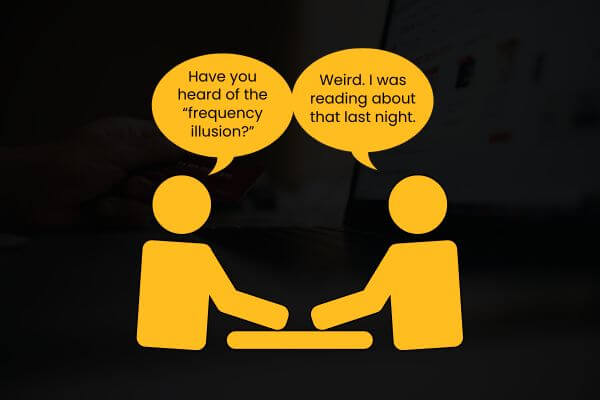
You know how you think about something random and then out of nowhere you see something about it or hear someone else talk about it?
Or maybe you’ll be talking about something totally random like a vacuum cleaner, and the next thing you know you see an ad on your phone for new vacuums?
Most of us blame it on our phones listening to us (which they are), but another thing that makes it even more interesting is something called the “frequency illusion.” The fact that our phones are listening to us is a story for another day…
The frequency illusion, also known as the Baader-Meinhof phenomenon, refers to our human tendency to notice things more often once they’re already on our minds.
We may have gotten that same ad for a vacuum anyway and wouldn’t have thought twice about it. But because it was on our mind, we NOTICE the ad.
I can guarantee this has happened to you. It happens to ALL of us because it’s one of the biggest psychological phenomena we have as humans.
When something gains our attention, our brains become primed to be on high alert for it. Let’s say you learn a new word for the first time, like “serendipity.” Suddenly over the next few days, you start hearing that word everywhere – in conversations, videos, ads, etc.
Of course, the word isn’t actually appearing more often. You’re just noticing it more because it’s fresh in your mind.
We’ll spot that word, product, song, or concept much more easily because our subconscious is already tuned into it.
Why the Frequency Illusion Matters in Marketing
The frequency illusion is one of the strongest psychological influences on consumer decision making. That’s because it shows how our minds really work when it comes to brands and buying stuff.
The more times people see or hear something, the more it sticks in their memory. It sinks deeper and deeper into their minds over time, even if they don’t realize it!
For your target audience, you want to be that solution that they see and hear about all the time. I’m talking non-stop exposure to your brand and messages.
You want to tap into customers’ minds and get familiar. Studies show people love to buy from brands they know and trust.
Let me give you an example…
Say you sell sneakers online. You keep showing social media and Youtube ads to your target customers. Your brand keeps popping up as they browse online.
Even if they don’t click on an ad, your name sticks in their mind. So when it’s time for new shoes, they’ll think of you first!
See, the more your brand is out there, the more potential customers you’ll have.
It’s true for your slogans and key messages too. Repeating your unique value over and over trains people to remember and choose you.
Your goal is to appear as often as possible in front of your target audience to prime their minds for your product.
So, what are the best strategies to make that happen?
1. Become a Retargeting MASTER
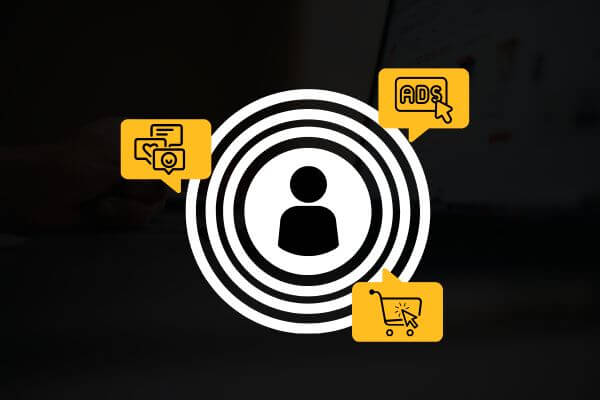
Retargeting, also called remarketing, means advertising specifically to people who have already engaged with your brand. This includes:
- Website visitors
- Email list subscribers
- Past customers
- Social media followers
- Recent conversions
These “warm” audiences already know you. They’re primed for your ads because your brand is familiar. Retargeting lets you follow up right when you’re top of mind.
With the frequency illusion, each ad exposure builds exponentially. The more often people see your retargeted ads, the more likely they are to convert.
We’re big on retargeting. If someone clicks on my stuff one time, suddenly I’m popping up all over the place.
I track every single click, like, page follow, opt-in, live attendance – we track everything.
And when it comes time to advertise, I hit these warm audiences with my retargeting ads.
No one is more likely to convert or engage with your content than your warm audiences. They’re aware of you. They’ve seen you recently. They’ve maybe even clicked or engaged recently too.
Targeting those audiences is the EASIEST way to use the frequency illusion.
I’m already on their minds. The more they see me, the more likely they are to convert.
Tips for Mastering Retargeting Ads
Look, this is NOT rocket science. I’m sure almost all of you are aware of retargeting ads. But being aware of it and MASTERING it are two very different things.
Let’s explore some tips for mastering retargeting ads:
- Track Website Traffic for Retargeting. Install tracking pixels like the Facebook pixel on your website to track site visitors. You can then create custom audiences to retarget.
- Identify Your VIP Buyers. Look at who’s recently made purchases or is highly engaged. Prioritize retargeting to these segment of customers.
- Personalize Dynamic Ads. Tools like Smartly.io let you customize ads with visitor names, past purchases, and more. Dynamic creative boosts relevance.
- Retarget Across Multiple Platforms. Follow visitors with ads on Facebook, Instagram, Google, YouTube, Twitter, Quora and beyond. Cross-device tracking helps.
- Use Retargeting in Emails Too. Drop retargeted banner ads into your email sequences. This reinforces everywhere they see you.
- Test Different Ad Copy & Visuals. Experiment to see what imagery, captions, and calls to action perform best for your audiences.
- Watch Conversions Closely. Continually optimize your landing pages, offers, and retargeting funnels. Double down on what converts.
With retargeting, you can saturate your warm traffic with relevant ads and offers. Done right, you’ll see higher re-engagement, lower CPLs, and more sales.
2. Continuous Email Follow Ups

Retargeting with paid ads is extremely powerful for leveraging the frequency illusion. But you also need to stay top of mind through organic channels.
That’s easier said than done. If there’s a downside to digital marketing these days – it’s just HOW MUCH of it there is.
People forget you in a matter of hours now, if not minutes. It used to be days, weeks and even months. That’s why it’s so important to be engaging with your audience on multiple channels.
Twenty years in this business and one of my favorite ways is still email. Sending more emails (as long as they’re GOOD) is definitely an EASY way to leverage the frequency illusion. You can continually nurture subscribers and keep your brand front and center.
I hear from so many marketers who are afraid to “bother” people by emailing too much. Well, there’s one thing that’s even worse than bothering people. It’s being forgotten by them.
If you’re at a lost on how to do your email follow-ups, start with these tips:
- Start Following Up Immediately. First exposure is when your brand is fresh. Start your email sequence just minutes or hours after sign-ups.
- Automate Your Follow-Up Flow. Tools like Drip, ActiveCampaign, and Klaviyo make it easy to schedule and automate email follow-ups.
- Send Consistently – Not Just Once. Instead of just one follow-up email, send a series over days or weeks. Sustain momentum.
- Personalize Copy with Merge Tags. Insert subscribers’ names, purchases, etc., to boost open rates, clicks, and relevance.
- Send From Real People. Instead of no-reply addresses, have emails come from real employee names and actual addresses.
- Make Follow-Ups Valuable. Share helpful info, deals, tools, or resources. Follow-ups should provide ongoing value.
- Promote Your Best Content. Rotate fresh links to your newest blog posts, videos, case studies, and other great resources.
- Avoid Sales Pitches Early. Focus first on providing value before pitching products. Build trust and familiarity first.
- Segment and Tailor Messages. Send different follow-up paths to customers vs. subscribers, ages, interests, etc.
- Check Open and Click Rates. Keep optimizing your subject lines, copy, and sending times based on email metrics.
I email my lists every single day, and have been for years. No. It’s not impossible at all because I don’t try to write about anything and everything. I only have 4 types of email content I rotate throughout my list.
Trust me, they’re the ONLY emails you’ll ever need to send to keep your contacts engaged and your conversions coming.
So start emailing your list mor often! Stay in front of people in multiple places. Don’t give them a chance to forget you.
3. Put It All Together With “Omnipresence”
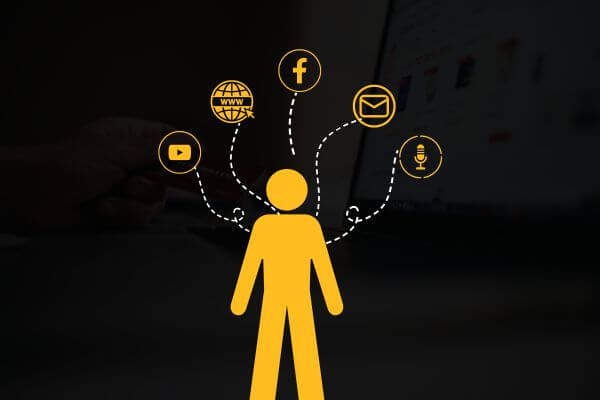
For maximum impact, combine retargeting ads and email follow-ups with presence across all channels. The goal is omnipresence.
This is where you become invincible. Do this well enough and people might think you’re following them.
Well, as a matter of fact, you kind of are – digitally at least. When you use omnipresent marketing, you’re now reaching people through…
- Search engines
- YouTube
- Social media
- Industry forums
- Podcasts
- Webinars
- Events
- Partnerships
- Guest articles
- Review sites
Wherever you go, you’ll start seeing me and my brands. This is the #1 way to take a warm lead and convert them in 2023. The old saying was that it takes seeing a brand 7 times to get a conversion. In my opinion, this now takes more like 12-15 times.
When you’re already on someone’s mind, and then your messaging is reinforced repeatedly through multiple channels, you’re much more likely to get a customer.
But I do want to say that this can be a big ask since you’ll need more planning and a team to get things coordinated. Here are some pointers when going for omnipresence:
Audit Where Your Audience Spends Time. Get analytics for traffic sources, keywords, and discovery channels. Prioritize those areas.
Create A Unified Brand Message. Make sure messaging aligns across channels, reinforcing positioning consistently everywhere.
Use Cross-Channel Retargeting. Remarket across multiple sites and apps based on your email lists and customer base.
Develop Owned Channels. Don’t just rent ads. Build your platforms like blogs, podcasts, and communities you own.
Publish and Engage Daily. Create and share social media updates, videos, blog content, and more daily. Stay top of mind.
Promote Content Across Channels. Post your blogs on LinkedIn, email links to videos, run social ads back to resources, etc.
Make Ads and Organic Work Together. Ensure paid ads enhance organic discovery and vice versa. Let them fuel each other.
With ongoing cross-channel exposure, you make sure interested prospects turn into engaged customers. Consistent visibility leads to familiarity, trust, and sales.
Content Powers Your Marketing
Alright, let’s recap the big ideas so far…
We’ve covered the tactics to tap into the frequency illusion for your marketing – retargeting, email, and going omnichannel.
But here’s the thing: all these strategies depend on killer content!
At its core, marketing is about creating valuable messages and stories that resonate with your target customers.
Pumping out blogs, videos, podcasts, and other content formats gives you more ways to be helpful in front of audiences. And it gets your brand name swirling around in their heads! More content equals more love.
Good content also lets you connect without hardcore sales pitches all the time. People respect brands who teach them things they can use immediately. You get to be the guide your audience craves.
So, I’m going to throw in a few bonus tips on how you can create content that gets people coming back.
Hook Your Audience By Answering Their Key Questions
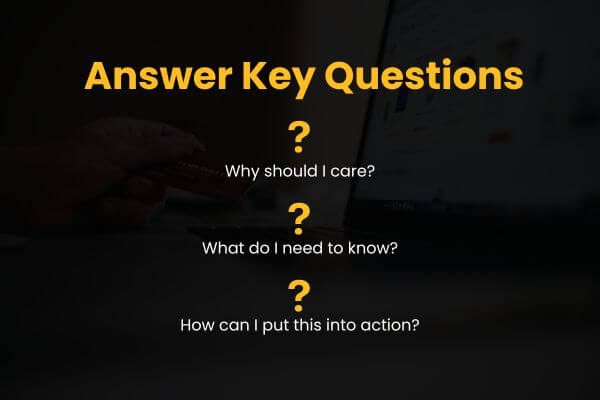
Hook people fast by showing the “why, what and how” they’ll get from your content. Make it crystal clear how you’ll help them and they’ll be glued to your content!
The best way to do this is by directly answering their main questions right up front:
- Why should I care? Show people why your content is important and worth their time.
- What do I need to know? Dive right into detailed, useful information instead of fluffy filler.
- How can I put this into action? Provide clear, actionable takeaways people can implement.
Address these key questions in your headlines and introductions to grab attention fast. When people immediately see your content will help them, they’ll eagerly dive in rather than tuning out. Answering the “why, what, and how” makes your content a magnet versus a chore.
Create Valuable, Free Content
Give away your absolute best content for free. I’m serious.
Your goal is to make people realize “If this is what I’m getting for free, what kind of amazingness do I get if I pay?”
Three things you need to remember for your free content:
- Make your free content better than most paid content. Over deliver value to impress people.
- Don’t get greedy. Avoid over-monetizing or putting everything behind a paywall.
- Earn trust and loyalty with excellent free content first.
This approach pays off because impressed, loyal readers become paying customers down the road.
Diversify Your Content for Maximum Impact
Next, mix up your content styles and formats. Don’t just stick to one thing or people will get bored.
Try different types like:
- Written formats: Blog posts, whitepapers, emails, ebooks
- Audio formats: Podcasts, audiobooks, audio summaries
- Visual formats: Webinars, product demos, interview videos, slide decks
You need to keep surprising and delighting your audience with fresh content experiences. Leverage the strengths of each format, too.
For example, in-depth ebooks allow you to share more nuanced insights, while punchy videos are perfect for more visual demonstrations. Podcasts are great for longer storytelling.
Look at competitors succeeding with formats you haven’t explored yet. See what your audience responds to most. Then double down on those winning formats.
Make Content Easy To Share on Social Media
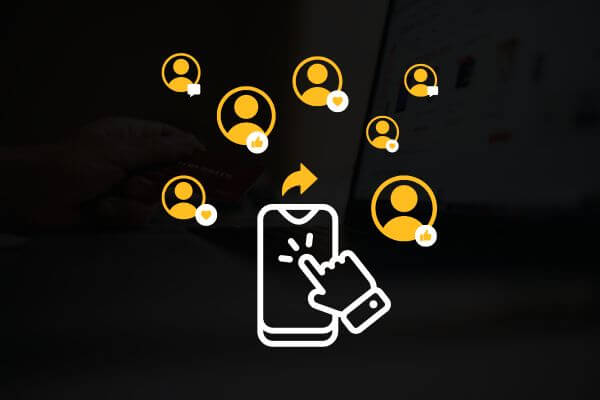
Make it easy for people to share your content across their networks.
You do this by using share buttons, adding captivating visuals, creating practical tips, adding incentives for sharing, posting your unpopular opinion—whatever’s interesting and valuable to your audience.
Content that gets shared expands your reach and brand like wildfire. And that brings in more leads and sales. Give them content they can’t help but share!
Don't Be a Perfectionist
It’s easy to get hung up on trying to create flawless content. But perfectionism can be the enemy of consistent content creation.
The key is finding a balance between quality and quantity.
Your content should be valuable, useful, and well-presented. But it doesn’t need to read like Shakespeare or take a month to produce a single piece.
Focus on building the habit of taking consistent action on content creation instead of endless polishing. Push past perfectionism paralysis.
At the end of the day, your content can’t impact anyone if you never hit “publish.”
Get clear on the minimum viable quality needed, then start churning out content consistently. You can always go back and improve it over time. But for now, done is better than perfect.
Just get valuable content out there regularly, even if it’s not completely polished. Consistency trumps perfection every time.
Have You Been Using the Frequency Illusion in Your Marketing?
There you have it – an in-depth look at how to tap into the powerful frequency illusion to elevate your marketing results.
We covered key tactics like retargeting warm audiences, sending consistent email follow-ups, personalizing your messaging, and achieving true omnichannel presence.
You also now know how crucial quality, diversified content is to cut through the noise. And how answering audience questions and giving away valuable content earns loyalty and trust.
So let me ask:
How have you been leveraging the frequency illusion? What new strategy from this article are you excited to test out?
I’d love to hear your biggest takeaways! You have a direct line to me when you join our FREE Expert Scale Facebook group.
You’ll also be able to network, ask questions, and learn from other business owners who are CRUSHING it.
Click here to join our group and I’ll see you on the inside!